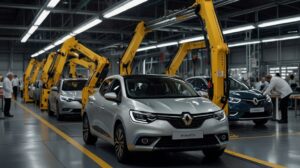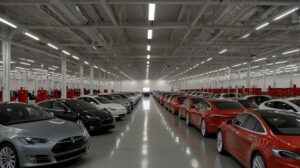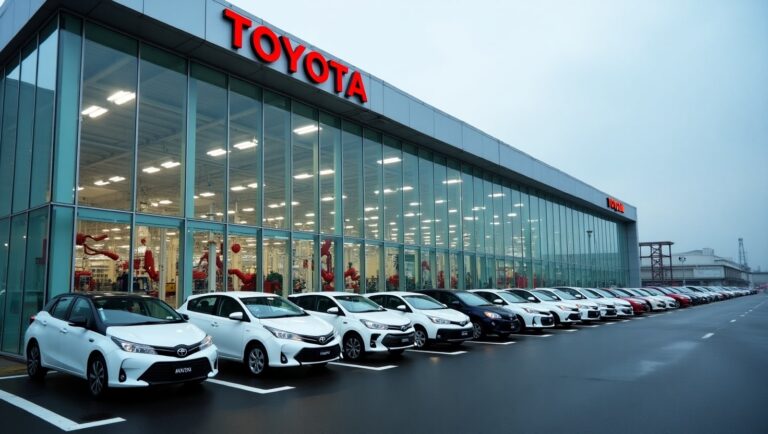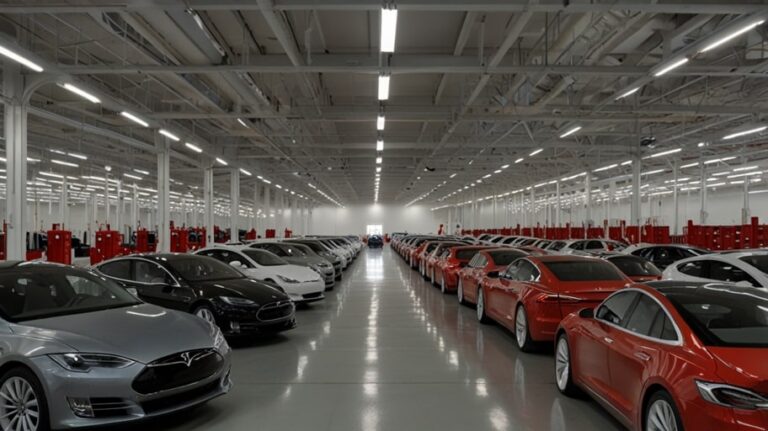Renault is a French automaker that has made significant contributions to the car manufacturing sector of the world, with its futuristic concept of automobiles being designed to run on electricity and the constant partnership with the Nissan Motor Corporation of Japan. Renault communicated on July 1, 2025, that it had booked a huge extraordinary loss of 11billion dollars on its holdings in Nissan, which was a major setback to its financial position. Reuters announced this news, and it reflects the problems of the Renault-Nissan-Mitsubishi Alliance in the case of stagnating sales and strategic mismatches, as well as the changing environment in the automotive industry. This paper will look at the cause of the loss, how Renault reacted to it, and the wider picture of the concerns of the firm and the international auto industry.
The $11 Billion Loss
History of Renault-Nissan Alliance
Since 1999, the Renault-Nissan Alliance has been the cornerstone of the global strategy of both companies, with access to shared technologies and manufacturing processes as well as market access. Nissan has Renault as a notable shareholder holding 43.4 percent of shares. Nonetheless, the partnership has experienced pressure over the past couple of years because of managing issues, and conflicting strategic goals, as well as outside factors such as the worldwide chip scarcity and the emergence of electric vehicles (EVs). The 11 billion deficit is an impairment of $13.1 billion of Renault’s investment in Nissan, and this is due to the poor sales of the Japanese auto maker and continues to decline in the share market.
The challenges being faced by Nissan have been attributed to multiple factors, such as the 7 per cent decline in the overall vehicle sales globally in the year 2024, led by China and North America. The firm has been struggling to update its product range as well as competing against other EV-focused companies such as Tesla and BYD. Reuters indicated that Renault’s write-down is a non-cash item so it does not affect the liquidity, but it leaves a huge dent on its balance sheet and investor perception. Messages on X called the future of the alliance in doubt, with some of the users speculating that Renault might further dilute its stake in Nissan so as to gather up cash.
Causative Factors to the Loss
The Market Problems of Nissan
The poor performance of Nissan is one major cause of the loss of Renault. The Japanese automaker has striven to recover steam after several years of austerity and cutbacks. Its EV model, including the Ariya, has not won a large market share, and EV battery ranges and prices are trailed by opponents. Moreover, the overdependence of Nissan on the Chinese market, where the demand for internal combustion engine vehicles has decreased, has affected the sales of Nissan. Bloomberg reports that by the middle of 2025, Nissan had dropped to $12 billion in market capitalization as compared to its high in a decade, and this has significantly affect the worth of Renault’s share.
Strategic Misalignments
Relations within the Renault-Nissan Alliance are being marred with internal tensions. The urgency with which Renault has shifted its focus to EVs and software-defined vehicles is opposed to that of Nissan, which is not moving fast enough to change its focus to traditional vehicles. The synergy in the alliance has been compromised by the disagreement on the issue of technology sharing and collaborative investments. To highlight an example, the Ampere division that Renault has devoted to EVs has focused the markets in the European continent, whereas Nissan has concentrated on hybrids in Asia and North America. Such divergent planning has cut short on cost advantage advantages that used to characterize the association leading to the economic pinch on the part of Renault.
Macroeconomic Pressures
International economic issues, such as increased interest and experience in supply chains, have made the issue faced by Renault worse. The automobile sector is facing increased manufacturing expenses because of semiconductor and raw material products such as lithium and cobalt. Tougher emissions regulations in the EU have similarly made an impact on Renault’s European operations and have forced the company to invest heavily to comply. These and other issues have caused margins to be squished and the Nissan write-down is a sharp blow indeed.
Strategic Future and The Response of Renault
Financial Restructuring
Renault is responding to contain the effects of the loss of 11 billion dollars. The company was reported to be planning the streamlining of its operations by slashing down on the Nissan share, as a way of raising money. According to analysts, selling part of its shares would help raise between 4-5bn that Renault could exploit in financing its EV plans and the debt reduction. The CEO of the company, Luca de Meo, said that the emphasis would be put on profitability since Renault is focusing on high-margin markets, as well as on new models such as the electric Renault 5. In its first-half revenue, even though the company suffered a loss, Renault will still be up by 3 percent or 27 billion euros because of the demand for its Dacia brand in Europe.
Causative Factors to the Loss
The Market Problems of Nissan
The poor performance of Nissan is one major cause of the loss of Renault. The Japanese automaker has striven to recover steam after several years of austerity and cutbacks. Its EV model, including the Ariya, has not won a large market share, and EV battery ranges and prices are trailed by opponents. Moreover, the overdependence of Nissan on the Chinese market, where the demand for internal combustion engine vehicles has decreased, has negatively affected the sales of Nissan’s negatively. Bloomberg reports that by the middle of 2025, Nissan had dropped to $12 billion in market capitalization as compared to its high in a decade, and this has significantly affect the worth of Renault’s share.
Strategic Misalignments
Relations within the Renault-Nissan Alliance are being marred with internal tensions. The urgency with which Renault has shifted its focus to EVs and software-defined vehicles is opposed to that of Nissan, which is not moving fast enough to change its focus to traditional vehicles. The synergy in the alliance has been compromised by the disagreement on the issue of technology sharing and collaborative investments. To highlight an example, the Ampere division that Renault has devoted to EVs has focused on the markets in the European continent, whereas Nissan has concentrated on hybrids in Asia and North America. Such divergent planning has cut short on cost advantage advantages that used to characterize the association leading to the economic pinch on the part of Renault.
Macroeconomic Pressures
International economic issues, such as increased interests and experience to supply chains, have made the issue faced by Renault worse. The automobile sector is facing increased manufacturing expenses because of semiconductor and raw material products such as lithium and cobalt. Tougher emissions regulations in the EU have similarly made an impact on Renaults European operations and has forced the company to invest heavily to comply. These and other issues have caused margins to be squished and the Nissan write-down is a sharp blow indeed.
Strategic Future and The Response of Renault
Financial Restructuring
Renault is responding to contain the effects of the loss of 11 billion dollars. The company was reported to be planning the streamlining of its operations by slashing down on the Nissan share, as a way of raising money. According to analysts, selling part of its shares would help raise between 4-5bn that Renault could exploit in financing its EV plans and the debt reduction. The CEO of the company, Luca de Meo, said that the emphasis would be put on profitability since Renault is focusing on high-margin markets, as well as on new models such as the electric Renault 5. In its first-half revenue, even though the company suffered a loss, Renault will still be up by 3 percent to 27 billion euros because of the demand for its Dacia brand in Europe.
Rediscovering the Alliance
The two partners (Renault and Nissan) are making efforts to reorganize their partnership to regain lost competitiveness. This will comprise a new model of teamwork or more emphasis on sharing EV platforms and R&D expenses. Their companies are also looking at other collaborations with other car companies like was done with Mitsubishi and probable Chinese manufacturers in order to strengthen themselves in the world markets. But those attempts meet barriers since the level of trust inside the alliance is still low after several years of scandals, such as the infamous case of Carlos Ghosn.
Implications for Renault and the Auto Industry
Financial and Market Impact
The amount of the loss of 11 billion dollars undercuts the financial stability of Renault and its shares have already fallen by 5 percent in the Paris Bourse ever since the announcement was made. The write-down might restrict Renault’s investment in things such as autonomous driving and the development of batteries, which are high-priority areas of competition. The exposure of Renault to the volatility of Nissan also comes as a concern to its investors therefore it has been called upon that the process of divestment should take place more quickly. The defeat brings out the danger of cross-border collaboration in an industry that is changing rapidly.
Industry Trends
The history of the Renault-Nissan relates to the general tendencies in the automobile industry. The dominance of EVs and software-controlled vehicles means that traditional car manufacturers should be able to adjust rapidly or end up becoming irrelevant. Firms such as Volkswagen and Toyota are betting big on EV systems, with new startups, Rivian and Lucid gaining momentum. Renault, on the one hand, needs to negotiate between its old-school business and a technological future that awaits them, and on the other hand, to cope with the consequences of the failed partnership with Nissan. The problems of the alliance can also persuade other manufacturers to seek more project-oriented, less-equity alliances as opposed to long-term equity partnerships.
Industry and Public Responses
The news gained a lot of popularity on X where users discussed the feasibility of the alliance. One party doubted that Renault would regain because Nissan had remained in a pale state longer, and the other applauded that the deployment of EVs would be a salvation to Renault. Reuters industry watchers observed that the write-down was a much-needed reset to Renault but cautioned that more losses would later ensue should Renault fail to turn around at Nissan. The news also led to a debate on the overall situation of legacy automakers in the era of EVs.
Conclusion
Losses Renault took on Nissan It makes sense that Renault paid a heavy price to take the risk of global automotive alliances, losing up to 11 billion dollars in its stake with Nissan. Inasmuch as the write-down may seem to be an indication of the challenges that Nissan is going through, as well as strategic mismanagement that the company had to have faced, it is also an indication of the necessity of Renault to align itself with a fast-paced industry. Renault refocused its financial plans and its alliance structure in order to stand on its feet again, and the future of the company looks questionable. As the settings of the automotive industry are experiencing the process of electrification and digitalization, the solutions to these challenges will define the competitiveness of Renault and shape the future of the Renault-Nissan-Mitsubishi Alliance.







